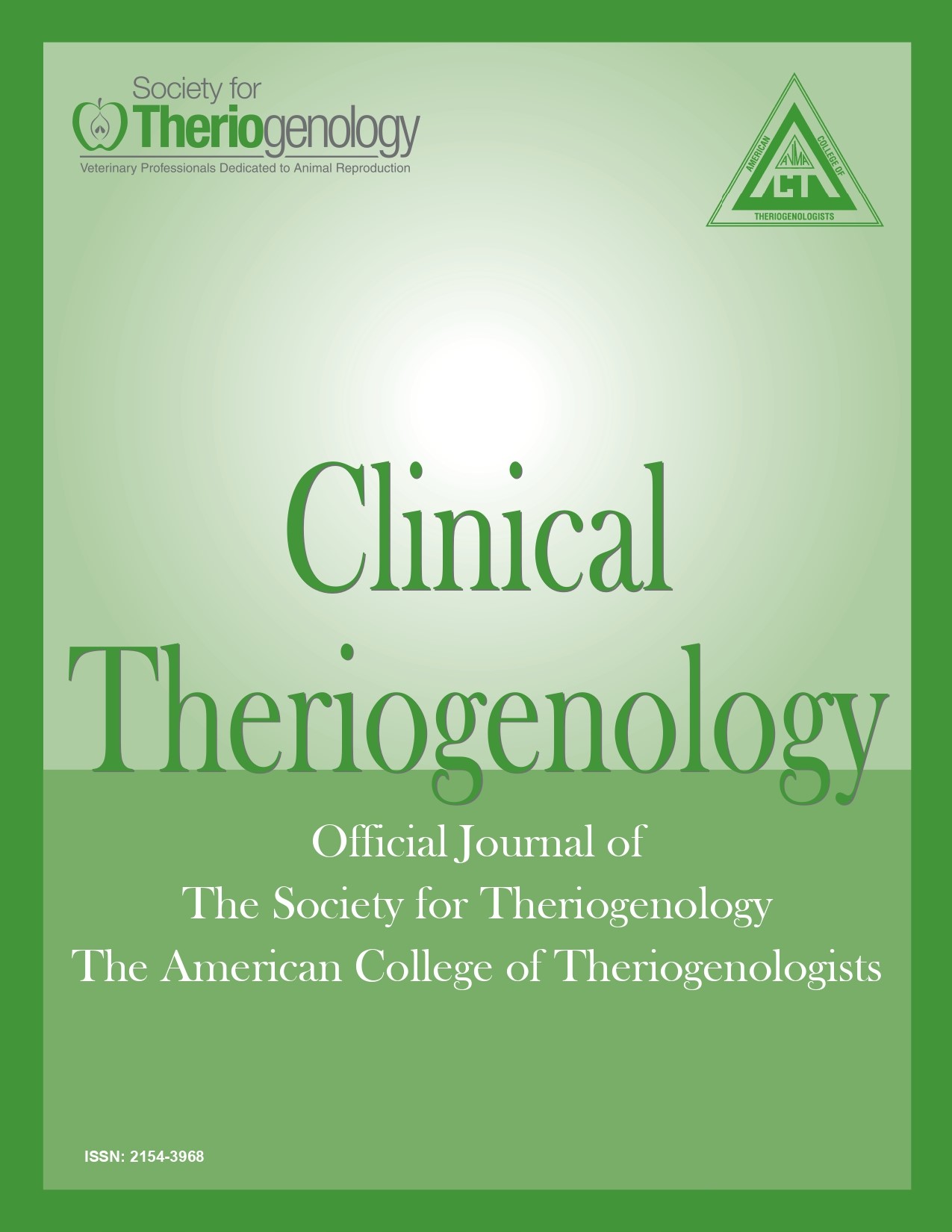Semen extender type and cold storage of tissue affect cryosurvival of alpaca epididymal sperm
Abstract
The objectives of this study were to determine the ability of liposome- and DMFA-containing semen extenders to support cryosurvival of alpaca epididymal sperm, and to evaluate the effect of epididymal cold storage on post-thaw viability. It was hypothesized that both semen extenders provide appropriate cryoprotection, and post-thaw sperm viability does not differ when alpaca epididymal sperm are cryopreserved immediately after castration or after 24 h of cold storage. Sperm were recovered from one epididymis from each male (n = 10) on the day of castration, and from the other one after 24 h of tissue storage at 4C. On each day, each sample was divided into two aliquots, which were cryopreserved in semen extender OptiXcell or BotuCRIO. Pre-freezing sperm parameters did not differ between samples obtained on the day of castration or 24 h later. Motility of sperm cryopreserved in BotuCRIO on the day of castration did not differ from pre-freezing values. Use of OptiXcell or delaying sperm cryopreservation decreased total (p = 0.002) and progressive sperm motility (p = 0.041) compared with pre-freezing values seen in sperm recovered on the day of castration. Membrane integrity was lowest when sperm were cryopreserved in OptiXcell after cold storage. Treatment had no effect on DNA integrity. It was concluded that the DMFA-containing semen extender BotuCRIO was superior to the liposome-containing semen extender OptiXcell at preserving post-thaw viability of alpaca epididymal sperm. Cold storage of epididymides for 24 h negatively affected post-thaw motility and membrane integrity of sperm. Therefore, cryopreservation with BotuCRIO immediately after castration is recommended for best preservation of post-thaw viability of alpaca epididymal sperm.
Downloads

This work is licensed under a Creative Commons Attribution-NonCommercial 4.0 International License.
Authors retain copyright of their work, with first publication rights granted to Clinical Theriogenology. Read more about copyright and licensing here.





